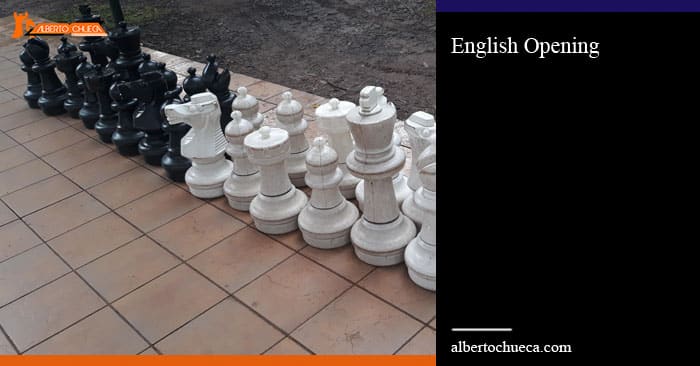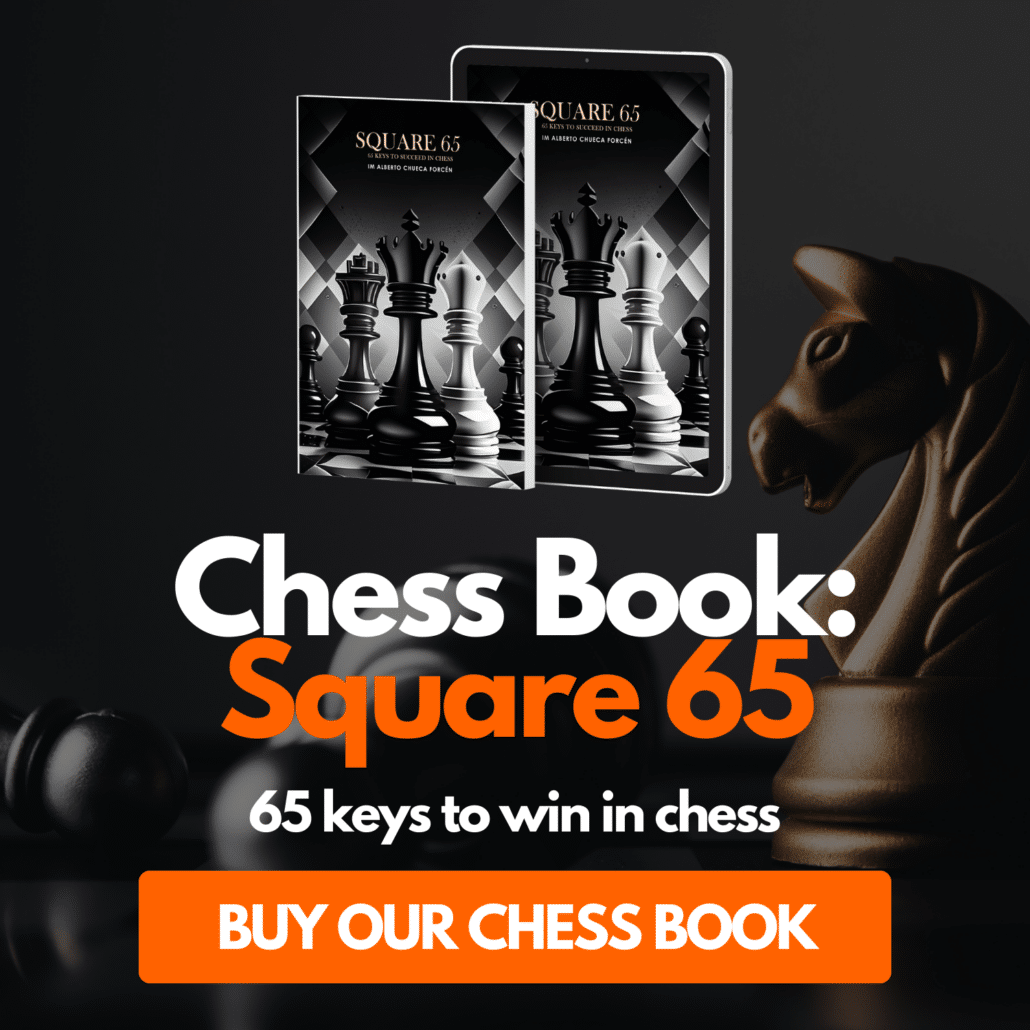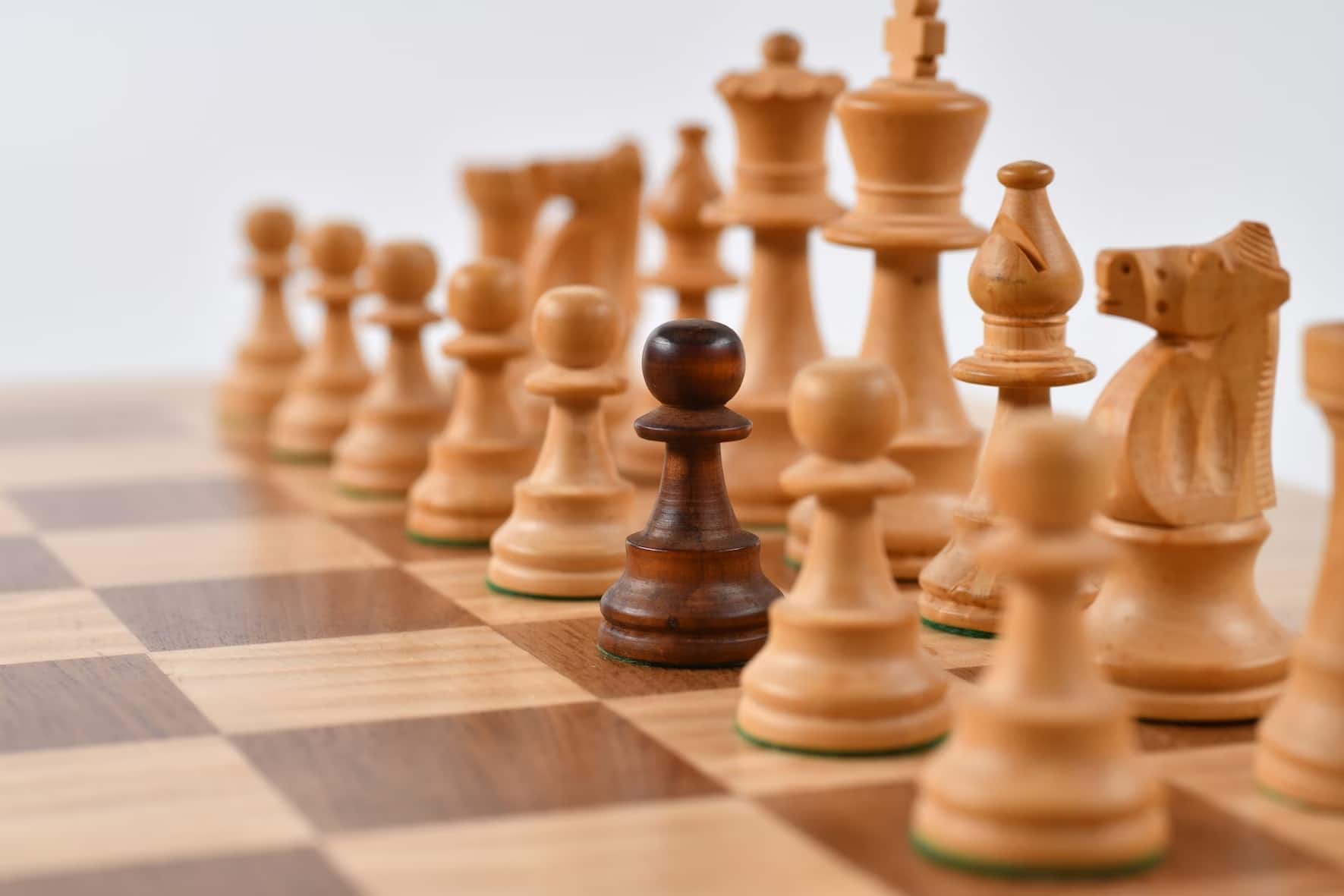Table of Contents
English Opening
Would you like to know and play a different, but still very strong opening as White? Do you prefer to play positions less known and also less theoretical than the ones played in King’s Pawn? If you do, then you are on the right site, because in this post we are going to learn and understand how to play English Opening.
We have English on the board when White plays 1.c4. This move is not directly developing any piece, but it is controlling the center, and if Black plays at some point d5, then White will be trading a side pawn for an enemy central pawn. So the move 1.c4 is probably better than what it seems.
Great Masters who played it
A significant number of World Champions have played English in World Championship Matches: Mikhail Botvinnik, Tigran Petrosian, Bobby Fischer, Anatoly Karpov, Garry Kasparov, and Magnus Carlsen.
Some theory and ideas in English Opening
I really like a general scheme with c4, Nc3, g3, Bg2, e3, Nge2, 0-0. It’s very solid and it works fine against many variations. But also, when Black is facing English, they can play in some different ways. It’s almost impossible to cover all of them in one article, so we will study three important and popular systems Black can use and how we can play as White against them.
Black Plays Four Knights
This is very popular among beginners and club players because they just develop pieces and control the center with normal moves like e5, Nf6, and Nc6.
1.c4 e5 2. Nc3 Nf6 3. Nf3 Nc6 4.e4! This is the move I like here.
At this moment Black needs to develop the dark squares Bishop, and they have two main options:
- The quiet 4. … Bb4 5 d3 and White develops Be2, 0-0, etc. The game is balanced, maybe a very slight advantage for White.
- And the tricky 4. … Bc5 5. Nxe5! Nxe5 6.d4 with a fork and Black can only get a balanced game if they know the line and play very accurately in the next moves.
Black Plays Symmetrical English
1.c4 c5
White can play several strong systems against Symmetrical English. I will just suggest an interesting and easy to play scheme I really like. There is a very nice game where former World Champion Anatoly Karpov played it and won.
1.c4 c5 2.b3 Nf6 3.Bb2 g6 4.Bxf6! (this is the key) exf6 5.Nc3 Bg7 6.g3 0-0 7.Bg2 0-0 8.e3 preparing Nge2 and castle with a very big pressure on weak square d5.
Black Plays King’s Indian Scheme
1.c4 Nf6 2. Nc3 g6 3. g3 Bg7 4. Bg2 d6 5.e3 0-0 6.Nge2 Nc6 7.0-0
And White is getting a slightly better middlegame position.
That is great, but… What if Black does not play either of these systems against English Opening?
If Black plays something different (still a possibility even when these are the most popular lines), then just follow the principles and develop pieces, and unless something big happens White should have at least a balanced position in middlegame. The next analysis of pawn structures and typical squares to develop white pieces could be helpful in those situations.
Typical Pawn Structure
White: a2, b2, c4, d3, e3, f2, g3, h2
Black: a7, b7, c7, d6, e5, f7, g6, h7
This is one of the most common pawn structures in the general scheme we are studying. One of the main plans in these positions is to control d5, very often driving the Knight there, so Black cannot break the center.
Frequently White can start some pawn storm in the queenside with b4, b5 (maybe a4, a5 too), exploiting the space advantage in that side of the board. The bishop on g2 is very good, and it is always helping from the distance, so the attack can be dangerous if Black does not find the right moves.
Breaking over f4 is also a possibility, trying to fight against Black’s central pawn and to open the “f” file for the rook. But the black Bishop on g7 might turn really dangerous after this break, so, White must be careful with this idea.
Typical Plans in English Opening
In general, in English middlegames, we have slow positions, with a stable center and interesting plans on the wings. Controlling d5 is a common plan in almost all the lines (since move 1, White is trying to control that square). Also, the first player should try very often to play in the queenside with ideas like b4-b5 as we mentioned in the pawn structure analysis.
It is hard to find a good for all positions plan because Black has too many ways to develop the pieces in the opening. But what we can say is that in English we improve pieces step by step and try to create some weaknesses in our opponent’s position and exploit them later.
Typical squares for pieces
King: Almost always castles kingside. In some rare positions, White could long castle, but that doesn’t happen very often. The fact that the “c” pawn is on c4 makes the queenside a little risky for the white King.
Queen: In general the Queen does not move until the middlegame. When Black develops dark squares Bishop, over the fianchetto, the Queen could protect white Bishop with some Qd2 to trade it on h6. In general, d2 is a nice square for the Queen.
Rooks: They will go towards where the action is. Sometimes b1 and c1, to guard a pawn storm in the queenside. Also, e1 and f1 could be fine if White is playing in the center or the “f” file. The first player needs to be careful with the rook on a1 and the threats of the g7 bishop on the diagonal.
Bishops: In the scheme, I am suggesting, light squares bishop goes to the fianchetto (unless Black plays Four Knights, then it goes to e2). The dark squares Bishop could go to e3 or g5. Also, it could be occasionally developed over b2 in some positions.
Knights: King’s Knight goes to e2 in our scheme, but very often f3 is pretty well if you prefer. The Queen’s Knight goes to c3 and frequently d5 later, controlling the center and the position.








